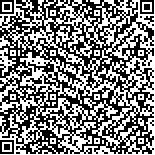本文已被:浏览 1050次 下载 548次
Received:July 15, 2018 Published Online:March 20, 2019
Received:July 15, 2018 Published Online:March 20, 2019
中文摘要: 目的 分析供精人工授精(AID)妊娠结局的相关因素,探讨提高AID成功率的策略。方法 回顾性分析2013年1月至2016年12月在南宁市第二人民医院生殖医疗中心行AID助孕5 348个周期不孕患者的临床资料。分析女方年龄、不孕年限、不孕类型、周期类型、授精时机、是否合并子宫内膜异位症以及同一周期双次授精间隔天数等因素对AID妊娠结局的影响。取α=0.05为检验水准,当采用行×列表χ2检验分割法时,校正为α=0.017。结果 随着年龄递增,20~30岁、31~35岁、36~40岁、>40岁患者的临床妊娠率(30.0%、23.0%、16.8%、7.1%,)和周期活产率依次降低(26.9%、18.9%、12.3%、3.1%),流产率依次升高(9.0%、16.1%、25.8%、50.0%),四个年龄段间差异有统计学意义(P<0.01)。双次授精、单次排卵后授精、单次排卵前授精、卵泡穿刺后授精的临床妊娠率(26.8%、22.3%、5.9%、0)和周期活产率(23.0%、18.7%、4.4%、0),四种人工授精时机间差异有统计学意义(P<0.01)。双次授精间隔1 d和间隔2 d者临床妊娠率分别高于间隔3~4 d者(P<0.017),而间隔1 d与间隔2 d者比较差异无统计学意义(P>0.017)。合并子宫内膜异位症者较未合并子宫内膜异位症者临床妊娠率和周期活产率明显降低(P<0.01)。结论 影响AID妊娠结局最重要的因素为年龄,年轻者可尝试多次AID,年龄大者应尽量缩短从就诊到妊娠的时间,宜尽早行供精体外受精-胚胎移植(IVF-ET);其次为授精时机,双次授精临床妊娠率较高,尽量选择在排卵前1或2 d和排卵后24 h内各行1次人工授精;如排卵前未能及时安排人工授精,单次排卵后授精也能获得相对满意的临床妊娠率。合并子宫内膜异位症的患者成功率明显下降,此类患者可减少进入供精IVF-ET前的AID周期数。
Abstract:Objective To analyze the factors related to the pregnancy outcome of artificial insemination with donor semen (AID) and the strategies to improve the success rate of AID.
Methods A retrospective analysis was made on the clinical data of female patients with 5 348 cycles infertility of AID-assisted pregnancy cyclein the Reproductive Medical Center of Second Nanning People′s Hospital from January 2013 to December 2016.The influencing factors of the pregnancy outcome of AID, including women age, duration of infertility, types of infertility and cycle, timing of insemination, whether to combine with endometriosis and the interval days between double insemination in the same cycle were analyzed.Taking α=0.05 as the test level, when using partition of chi-square statistics from R×C contingency tables, the correction was α=0.017. Results With the increase of age (four age groups:20-30, 31-35, 36-40 and >40 years old ) , the clinical pregnancy rate (30.0%, 23.0%, 16.8%, 7.1%) and the cycle live birth rate (26.9%, 18.9%, 12.3%, 3.1%) decreased in turn, and the abortion rate increased in turn (9.0%, 16.1%, 25.8%, 50.0%).There were significant differences among the four age groups (P<0.01).In double intrauterine insemination, single post-ovulation insemination, single pre-ovulation insemination and fertilization after follicular puncture, the clinical pregnancy rates were 26.8%, 22.3%, 5.9%, 0 respectively, and the live-birth rates per cycle were 23.0%, 18.7%, 4.4%, 0 respectively.There were significant differences in them among the four time point for artificial insemination (P<0.01=.The clinical pregnancy rate of patients with interval of 1-2 days between two insemination was higher than that of 3-4 days interval (P<0.017) , but there was no statistical difference in it between intervals of 1 day and 2 days. (P>0.017). The patients with endometriosis had lower clinical pregnancy rate and live-birth rate per cycle compared with non-endometriosis patients (P=0.004). Conclusion Age is the most important factor affecting the pregnancy outcome of AID.Young patients can take a few attempts of AID, but the elder should shorten the time from the visit to the pregnancy.Vitro fertilization-embryo transfer (IVF-ET) is advisable to elderly patients, performed as soon as possible.The second factor is the timing of fertilization.The clinical pregnancy rate of double intrauterine insemination can achieve satisfactory results.Artificial insemination should be carried out one or two days before ovulation and 24 hours after ovulation.If artificial insemination is not arranged in time before ovulation, it can obtain the relatively satisfactory clinical pregnancy rate to perform single intrauterine insemination after ovulation.The success rate of patients with endometriosis is significantly lower, AID cycle numbers could be reduced before IVF-ET with donor sperm.The success rate of patients with endometriosis is significantly lower, and the number of AID cycles can be reduced before IVF-ET for these patients.
keywords: Artificial insemination with donor semen Clinical pregnancy rate Spontaneous abortion rate Live-birth rate per cycle
文章编号: 中图分类号: 文献标志码:A
基金项目:广西壮族自治区卫生和计划生育委员会科研课题(Z20170108);南宁市科学研究与技术开发计划项目(20153124)
引用文本:
